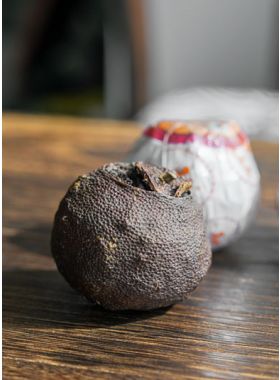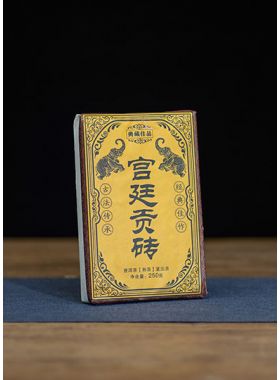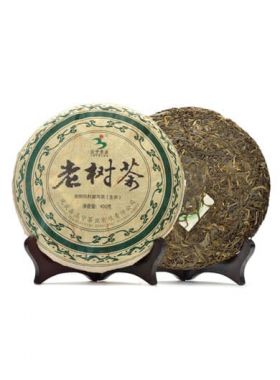-
Fast ShippingFree shipping for orders above $40
to most countries. -
Secure PaymentPay with Paypal, Credit Card …
-
Carefully SelectedFrequently Visit Tea Gardens.
Taste Repetitiously -
15 Days RefundNo Questions Asked
Refund Policy
Fengqing Zhuan Cha Raw Puerh Brick Tea 2005
Woody, sweet honey taste
Woody, sweet honey taste
| Origin: |
Fengqing County, Lincang City, Yunnan Province, China |
|---|---|
|
Harvest Date: |
May 15, 2005 - June 30, 2005 |
|
Production Date |
June, 2007 |
|
Net Weight |
240g |
| Dry Leaf: |
Compressed rectangle shape, the buds coated white fuzz and twisted with leaves are visible on the surface |
| Aroma: |
Pure woody notes (commonly only detectable in some aged raw pu-erh tea), sweet honey aroma |
| Liquor: |
Brilliant light yellow |
| Taste: |
Low bitterness and astringency by years aging. Sweet honey tones with floral after taste lingering. |
| Tea Bush: |
Fengqing large-leaf tea bush species |
| Tea Garden: |
Mengyou Tea Area |
| Caffeine: |
Moderate caffeine (less than 20% of a cup of coffee) |
| Storage: |
Store in cool, dry place away from sunlight; keep ventilated |
| Shelf Life: |
The aged the better |
Angel's Comment:
This Puerh brick tea is aging very well and delivers low bitterness with pleasant floral and honey taste.
Certification:
 |
| CQC Certification (NO. 001OP1600095/ NO. 001OP1600096) |
There is a saying which says that raw pu-erh tea needs to be stored over 10 years to get best taste. Let’s put aside the discussion about this saying. As for this tea, they have been stored in the “干仓” (pinyin: gancang) for 10 years (干仓 refers to those warehouses where its internal environment is kept dry all the year round for the purpose of ageing pu-erh) and so their tastes and aromas have been greatly enhanced.
The fresh herbaceous plants aromas of the newly harvest tea are turned into faint wood scent after 10-year storage in the 干仓. Much like its dry scent, the taste of this tea is delightfully mild, take a sip of it you will get the thirst-quenching feeling underneath your tongue immediately with long-lasting fragrance.
 |
Cup Method |
 |
Chinese Gongfu Method |
 |
Teacup: 12oz / 355ml |  |
Gaiwan: 3.8oz / 110ml |
 |
203℉ / 95℃ |  |
203℉ / 95℃ |
 |
5g Tea |  |
8g Tea |
 |
Brewing time: 3 - 5 mins |  |
12 steeps: rinse,10s,15s,20s,20s,20s,25s,30s,50s,70s,90s,120s,150s |
| Rinse time is around 5 seconds |
The major part of tea trees growing in Lida and Pinghe tea garden belong to Fengqing large-leaf variety, having an average of hundred years old. The tea garden is located in high mountains within the major tea-producing area of Fengqing County. The fresh leaves from this area are ideal for making Yunnan Puerh tea or Yunnan Dian Black tea since they are high in phytochemicals, which lead to the finished teas have a high level of protein, amino acid, alkaloid and TP, etc.
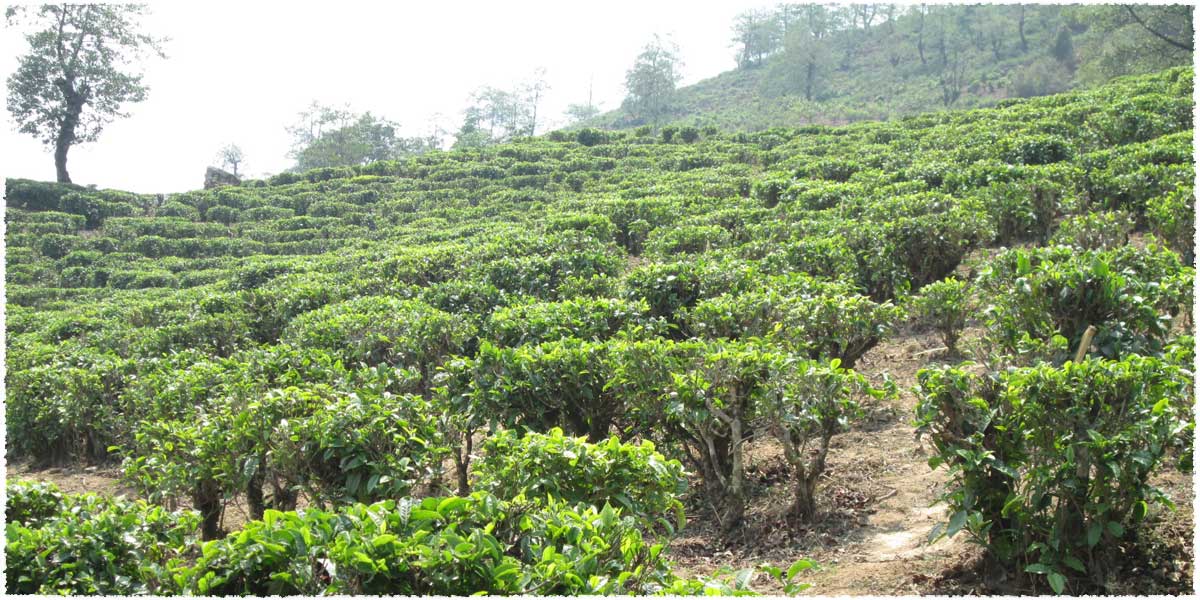
This Pu-erh Cake is from the representative Pu-erh production area Fengqing which is located in the south of Dianxi Longitudinal Valley. Fengqing is a county locates in the northwest of Lincang, one of the four famous Pu-erh production areas (Xishuangbanna, Pu’er, Lincang and Baoshan), and is one of the first origin places of tea in the world. It is also famous for being the hometown of Yunnan black tea in Lincang. Fengqing has a long history of planting, producing and drinking tea and it contains a throng of mountains alternated with rivers.
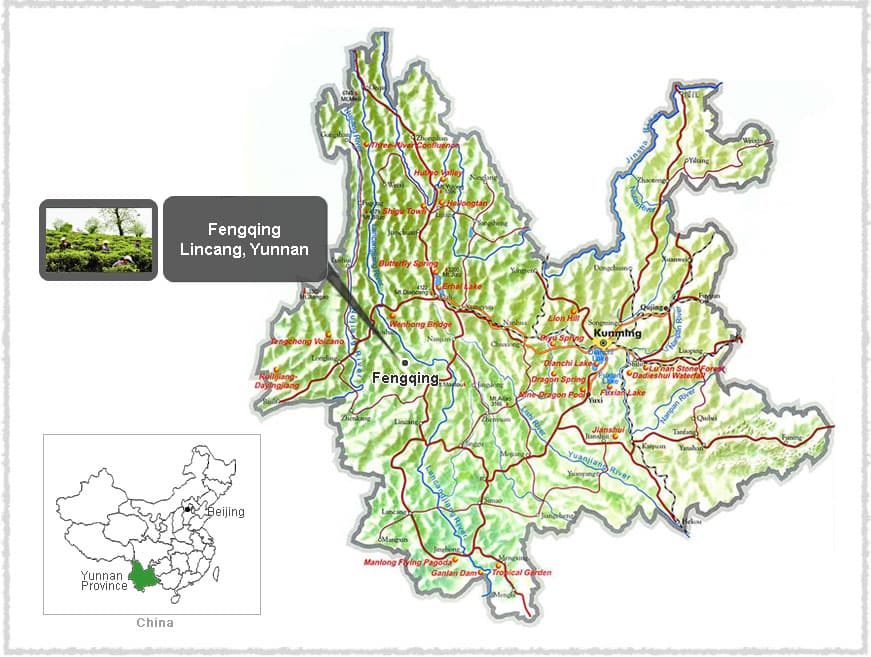
This Puerh Tea is made from Fengqing large-leaf species that belong to Yunnan large-leaf species. The sexual propagation, arbour, super large-leaf means this big plant can reach over 6 meters tall. In 1984 the Fengqing large-leaf species was certified by the Chinese Government as national grade and was numbered as “Huacha NO. 13 (GsCT13)”. This species contains an abundant amount of tea polyphenol and catechin. The formation of these teas in the spring is 2.9% amino acid, 30.2% tea polyphenol, 3.2% caffeine and 13.4% catechin.
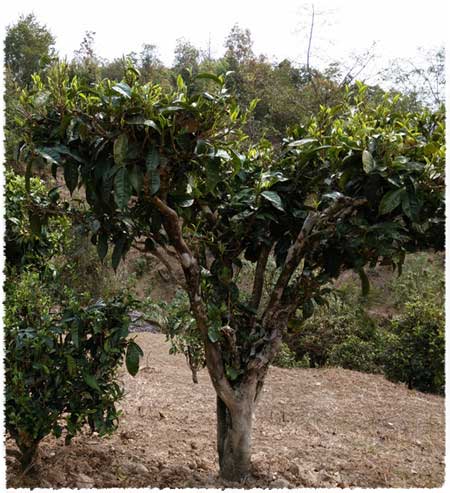
Pu'erh tea is one of the oldest types of tea in China, with a history stretching back over 1,700 years to the Eastern Han Dynasty, when the tea was called Jing Cha. Pu'erh is named after the town of Pu-erh in Yunnan province, which was the early trading center for this tea. In this teas early history it was used as a bartering currency in south west China. In south west China the famed Cha Ma Gu Dao - “Tea Horse Road” - was built especially to transport this tea through the Himalayas to other countries and areas in Tibet.



